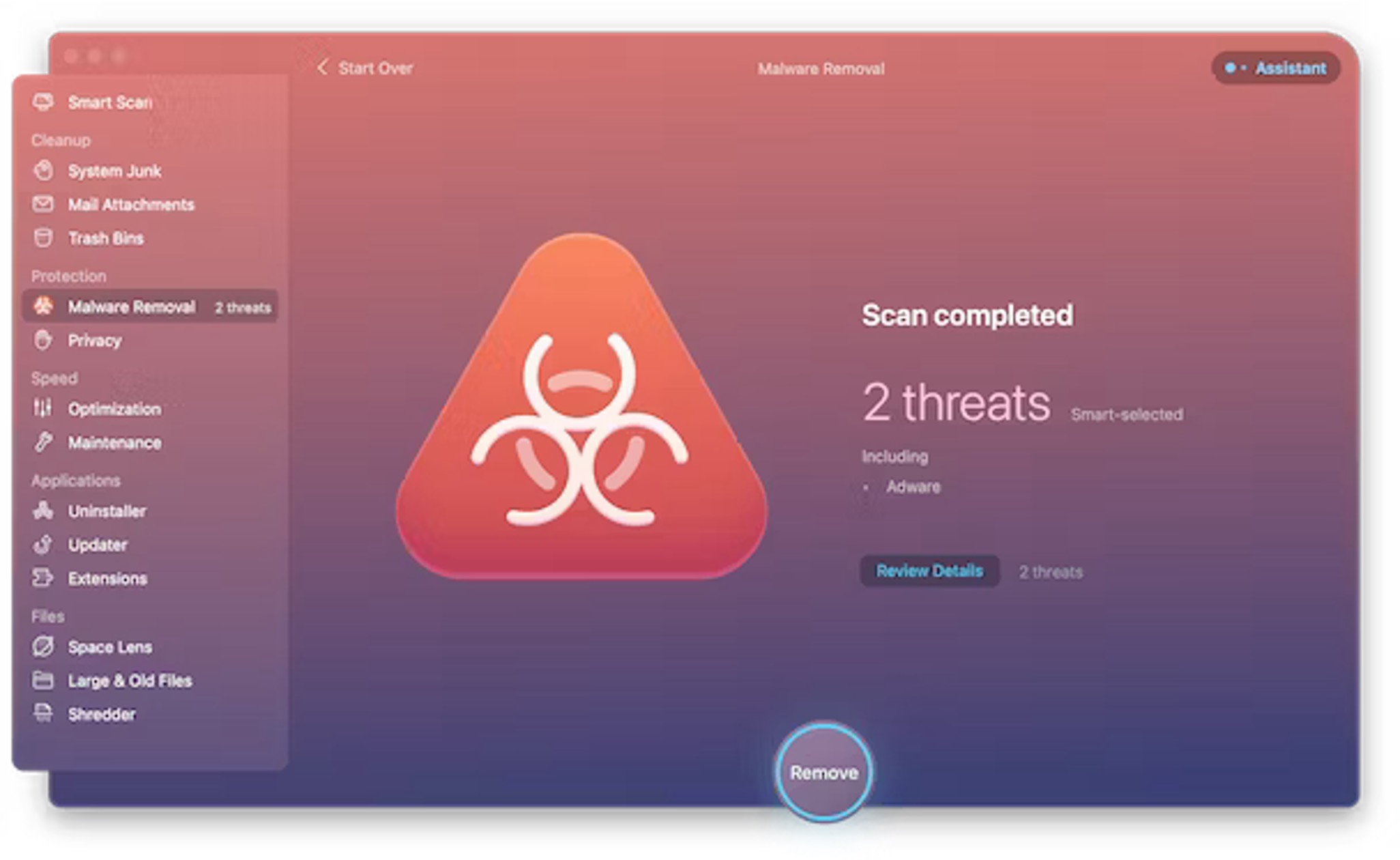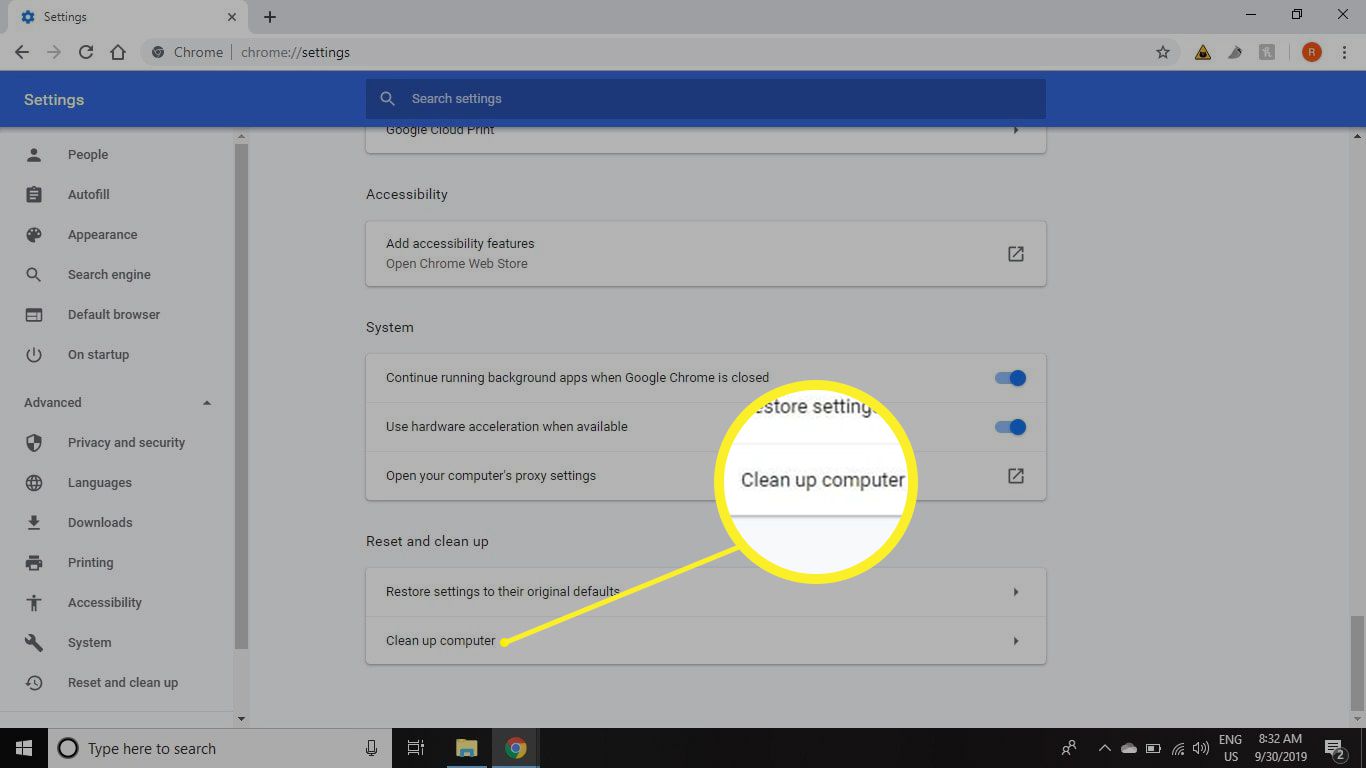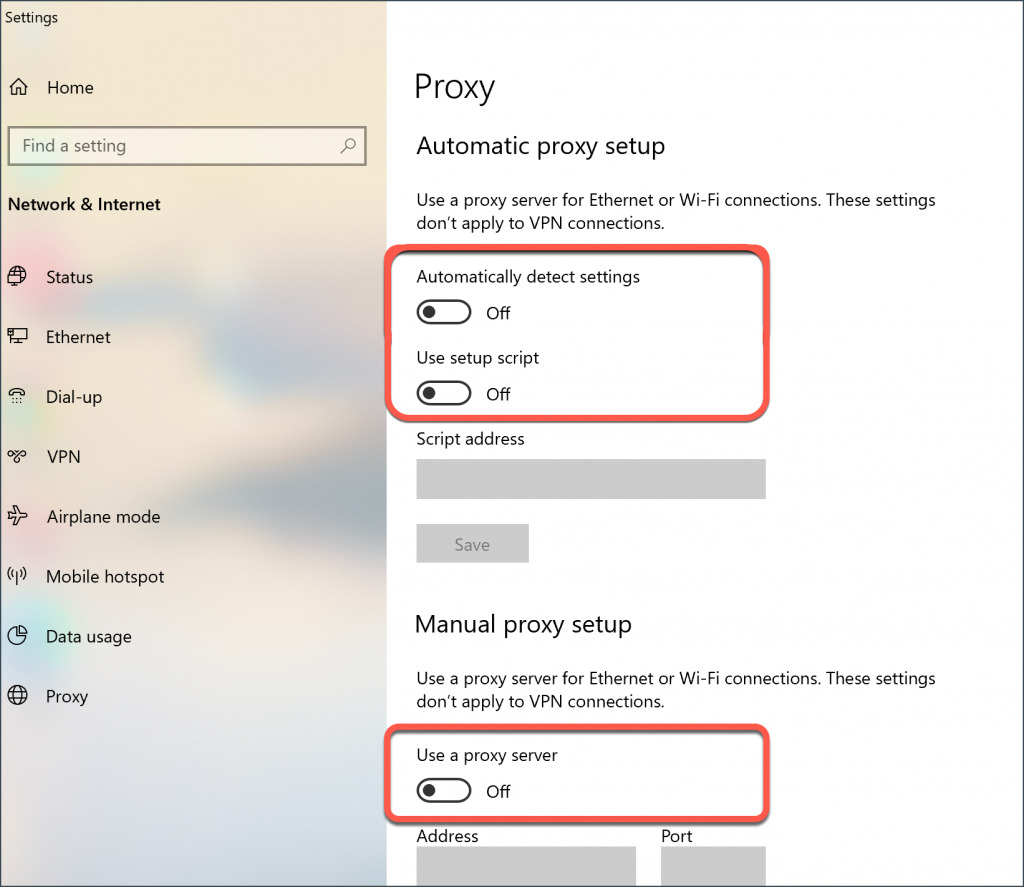Introduction
Encountering a browser virus can be a frustrating and concerning experience for anyone who relies on their web browser for daily tasks. A browser virus, also known as malware, can disrupt your online activities, compromise your sensitive information, and even expose your device to further security risks. However, with the right knowledge and tools, you can effectively remove a browser virus and restore your browser's functionality and security.
In this comprehensive guide, we will walk you through the essential steps to identify, remove, and prevent browser viruses. By following these steps, you can safeguard your online experience and protect your personal data from potential threats.
Whether you're using Google Chrome, Mozilla Firefox, Microsoft Edge, Safari, or any other popular web browser, the methods outlined in this guide are applicable across various platforms. It's important to note that while the specific steps may vary slightly depending on your browser and operating system, the fundamental principles of virus removal and prevention remain consistent.
By understanding the symptoms of a browser virus, utilizing antivirus software, resetting browser settings, clearing cache and cookies, and keeping your browser and operating system up to date, you can effectively combat the impact of browser viruses and maintain a secure and seamless browsing experience.
Now, let's delve into the step-by-step process of identifying, removing, and safeguarding against browser viruses, empowering you to take control of your online security and enjoy a worry-free browsing experience.
Step 1: Identify the Symptoms of a Browser Virus
When your web browser is infected with a virus, it can exhibit various symptoms that may indicate a security threat. Recognizing these signs early on is crucial in preventing further damage and swiftly addressing the issue. Here are the common symptoms that may indicate the presence of a browser virus:
-
Unwanted Pop-Up Ads and Redirects: If you notice an influx of intrusive pop-up ads or unexpected redirects to unfamiliar websites, it could be a sign of a browser virus. These disruptions often occur without user interaction and can lead to potentially harmful or deceptive web pages.
-
Unexplained Changes in Browser Settings: A browser virus may alter your default homepage, search engine, or new tab settings without your consent. If you find that your browser preferences have been modified unexpectedly, it's essential to investigate the possibility of a virus.
-
Sluggish Browser Performance: When a virus infiltrates your browser, it can significantly impact its performance, causing slow loading times, unresponsiveness, or frequent crashes. If your browser experiences a sudden decline in speed and stability, it may indicate a security compromise.
-
Unrecognized Browser Extensions or Toolbars: Browser viruses often install unauthorized extensions or toolbars that appear unfamiliar or suspicious. These additions can disrupt your browsing experience, track your online activities, or expose your system to further vulnerabilities.
-
Unexplained System Behavior: In some cases, a browser virus may extend its impact beyond the browser itself, affecting the overall behavior of your device. This can manifest as unexpected system errors, unusual network activity, or unauthorized changes to system files.
-
Security Warnings and Alerts: If your browser displays frequent security warnings, alerts about certificate issues, or prompts to download unknown software, it could be indicative of a virus attempting to compromise your system's security.
By remaining vigilant and recognizing these symptoms, you can proactively identify the presence of a browser virus and take the necessary steps to mitigate its impact. Once you've identified these symptoms, it's crucial to proceed with the appropriate measures to remove the virus and restore your browser's security and functionality.
Step 2: Use Antivirus Software to Scan for and Remove the Virus
Utilizing reputable antivirus software is a critical step in effectively identifying and eliminating browser viruses. These specialized programs are designed to detect, isolate, and remove various forms of malware, including browser viruses, thereby restoring your browser's integrity and safeguarding your device from potential security threats.
When selecting antivirus software, opt for a trusted and up-to-date solution from a reputable provider. Once you have installed the antivirus software on your device, follow these essential steps to scan for and remove the virus from your browser:
-
Update Antivirus Definitions: Before initiating the scan, ensure that your antivirus software is equipped with the latest virus definitions. These definitions contain information about known malware strains and enable the antivirus program to accurately identify and eliminate threats. By updating the definitions, you enhance the effectiveness of the scanning process and maximize the likelihood of detecting and removing the browser virus.
-
Initiate a Full System Scan: Most antivirus software offers the option to perform a comprehensive, full system scan, which examines all files, programs, and areas of your device for potential threats, including browser viruses. Initiate a full system scan and allow the antivirus software to thoroughly analyze your device, including your web browser and its associated files, to identify any malicious elements.
-
Quarantine and Removal: Upon completing the scan, the antivirus software will present a report detailing any identified threats, including browser viruses. Depending on the program's settings, it may automatically quarantine and remove the detected viruses, or it may prompt you to review and confirm the actions to be taken. Follow the recommended course of action to isolate and eliminate the browser virus from your system.
-
Regular Scans and Real-Time Protection: To maintain a secure browsing environment, configure your antivirus software to conduct regular scans and enable real-time protection features. By scheduling periodic scans, you can proactively detect and address potential threats, while real-time protection actively monitors your system for suspicious activities, including attempts by browser viruses to infiltrate your device.
By leveraging the capabilities of antivirus software, you can effectively scan for and remove browser viruses, fortifying your browser's defenses and preserving the integrity of your online activities. Additionally, staying vigilant and keeping your antivirus software updated ensures that your device remains resilient against evolving security risks, providing you with peace of mind as you navigate the digital landscape.
Step 3: Reset Your Browser Settings
Resetting your browser settings can serve as a powerful antidote to the lingering effects of a browser virus, restoring your browser to its default state and eliminating any unauthorized changes imposed by the malware. This process effectively eradicates malicious alterations, such as homepage redirects, unfamiliar search engines, and unauthorized extensions, thereby revitalizing your browser's integrity and functionality.
The method for resetting browser settings may vary slightly depending on the specific browser you are using, such as Google Chrome, Mozilla Firefox, Microsoft Edge, or Safari. However, the fundamental principles remain consistent across these platforms. Here's a general outline of the steps to reset your browser settings:
Google Chrome:
- Access Chrome Settings: Click on the three-dot menu icon in the top-right corner of the browser window, then select "Settings" from the dropdown menu.
- Navigate to Advanced Settings: Scroll down and click on "Advanced" to reveal additional settings options.
- Reset Settings: Under the "Reset and clean up" section, select "Restore settings to their original defaults."
- Confirmation: A confirmation prompt will appear, allowing you to finalize the reset process.
Mozilla Firefox:
- Access Firefox Options: Click on the three-line menu icon in the top-right corner, then select "Options."
- Navigate to Help: In the left-hand menu, click on "Help."
- Troubleshooting Information: Under the "Troubleshooting Information" section, click on "Refresh Firefox."
- Confirmation: A confirmation dialog will appear, enabling you to confirm the reset action.
Microsoft Edge:
- Access Edge Settings: Click on the three-dot menu icon in the top-right corner, then select "Settings."
- Navigate to Reset Settings: Scroll down and click on "Reset settings."
- Reset Options: Choose the specific components you wish to reset, such as startup pages, home pages, search engines, and saved form data.
- Confirmation: Confirm the reset action to initiate the process.
Safari:
- Access Safari Preferences: Click on "Safari" in the top menu bar, then select "Preferences."
- Navigate to Privacy: Click on the "Privacy" tab.
- Manage Website Data: Click on "Manage Website Data" to clear stored website data, which can help reset certain aspects of Safari's functionality.
- Confirmation: Close the preferences window to complete the reset process.
By resetting your browser settings, you effectively purge any lingering traces of the browser virus, restoring your browser to a clean and secure state. This proactive measure reinforces your browser's resilience against potential security threats and ensures a seamless and secure browsing experience.
Step 4: Clear Your Browser Cache and Cookies
Clearing your browser's cache and cookies is a fundamental step in maintaining the health and security of your browsing experience, especially in the aftermath of encountering a browser virus. The cache and cookies stored by your browser serve various purposes, such as speeding up website loading times and retaining user preferences. However, they can also become repositories for potentially harmful data, including traces of browser viruses or compromised website elements. By clearing these elements, you can effectively purge any lingering remnants of the virus and enhance your browser's performance and security.
Clearing Browser Cache:
When you visit websites, your browser stores elements of those sites, such as images, scripts, and stylesheets, in a local cache. While this caching mechanism can improve loading times for frequently visited sites, it can also lead to outdated or corrupted content being served to your browser. To clear your browser's cache, follow these general steps:
-
Google Chrome: Click on the three-dot menu icon, select "More tools," then choose "Clear browsing data." From the time range dropdown, select "All time," and ensure that "Cached images and files" is checked before clicking "Clear data."
-
Mozilla Firefox: Click on the three-line menu icon, select "Options," then navigate to the "Privacy & Security" tab. Under the "Cookies and Site Data" section, click on "Clear Data," ensuring that "Cached Web Content" is selected before confirming the action.
-
Microsoft Edge: Click on the three-dot menu icon, select "Settings," then choose "Privacy, search, and services." Under the "Clear browsing data" section, select "Choose what to clear," ensure that "Cached images and files" is checked, and click "Clear now."
-
Safari: Click on "Safari" in the top menu bar, select "Preferences," then navigate to the "Advanced" tab. Check the box next to "Show Develop menu in menu bar." Once the Develop menu appears, click on "Develop" in the top menu bar, then select "Empty Caches."
Clearing Browser Cookies:
Cookies are small pieces of data stored by websites on your browser to remember your preferences and login status. However, they can also be exploited by malicious entities to track your online activities or store harmful scripts. To clear your browser's cookies, follow these general steps:
-
Google Chrome: Access the "Clear browsing data" menu as described above, ensure that "Cookies and other site data" is selected, and proceed to clear the data.
-
Mozilla Firefox: Access the "Clear Data" menu as described above, ensuring that "Cookies and Site Data" is selected, and proceed with the clearing process.
-
Microsoft Edge: Access the "Clear browsing data" menu as described above, ensuring that "Cookies and other site data" is selected, and initiate the clearing action.
-
Safari: Click on "Safari" in the top menu bar, select "Preferences," then navigate to the "Privacy" tab. Click on "Manage Website Data," select "Remove All," and confirm the removal of stored cookies.
By clearing your browser's cache and cookies, you effectively eliminate potential remnants of the browser virus, enhance your browser's performance, and mitigate the risk of encountering compromised or outdated website content. This proactive measure contributes to a secure and seamless browsing experience, allowing you to navigate the digital landscape with confidence and peace of mind.
Step 5: Update Your Browser and Operating System
Ensuring that both your web browser and operating system are consistently updated is a fundamental aspect of maintaining a secure and resilient digital environment. Regular updates not only introduce new features and enhancements but also address critical security vulnerabilities that could be exploited by browser viruses and other forms of malware. By prioritizing the update process for both your browser and operating system, you fortify your device against potential security threats and ensure that you are equipped with the latest protective measures.
Updating Your Web Browser:
Web browsers such as Google Chrome, Mozilla Firefox, Microsoft Edge, and Safari regularly release updates to address security vulnerabilities, improve performance, and introduce new functionalities. To update your browser, follow these general steps:
- Google Chrome: Click on the three-dot menu icon, select "Help," then choose "About Google Chrome." The browser will automatically check for updates and prompt you to install them if available.
- Mozilla Firefox: Click on the three-line menu icon, select "Help," then choose "About Firefox." The browser will check for updates and initiate the installation process if updates are available.
- Microsoft Edge: Updates for Microsoft Edge are typically delivered through Windows Update. Ensure that your operating system is set to receive automatic updates to ensure that Edge remains up to date.
- Safari: Updates for Safari are often included as part of macOS updates. To ensure that Safari is updated, regularly check for and install macOS updates through the App Store.
By keeping your web browser updated, you benefit from the latest security patches and performance optimizations, reducing the risk of browser viruses exploiting known vulnerabilities and enhancing your overall browsing experience.
Updating Your Operating System:
In addition to updating your web browser, maintaining an up-to-date operating system is crucial for bolstering your device's security and stability. Whether you are using Windows, macOS, Linux, or another operating system, staying current with the latest updates is essential. Here's how to update common operating systems:
- Windows: On Windows 10, navigate to Settings > Update & Security > Windows Update. Click on "Check for updates" to initiate the update process. Ensure that your system is set to receive automatic updates to stay protected.
- macOS: On a Mac, updates for macOS are available through the App Store. Click on the Apple menu, select "System Preferences," then choose "Software Update" to check for and install the latest updates.
- Linux: The update process varies depending on the Linux distribution you are using. Consult the documentation or support resources for your specific distribution to ensure that your system is updated with the latest security patches and enhancements.
By regularly updating your operating system, you benefit from improved security measures, bug fixes, and performance optimizations, reducing the susceptibility of your device to potential security threats, including browser viruses.
By diligently following these steps to update your web browser and operating system, you actively contribute to the overall security and resilience of your digital environment. This proactive approach empowers you to navigate the online landscape with confidence, knowing that your device is fortified against potential security vulnerabilities and equipped with the latest protective measures.
Conclusion
In conclusion, encountering a browser virus can disrupt your online activities and compromise the security of your personal data. However, by following the essential steps outlined in this guide, you can effectively identify, remove, and safeguard against browser viruses, ensuring a secure and seamless browsing experience.
By first recognizing the symptoms of a browser virus, including unwanted pop-up ads, unexplained changes in browser settings, sluggish performance, unrecognized extensions, and security warnings, you can promptly take action to address the issue. Identifying these symptoms early on empowers you to proactively mitigate the impact of a browser virus and prevent further security risks.
Utilizing reputable antivirus software is a critical step in the virus removal process. By updating antivirus definitions, initiating a full system scan, and leveraging quarantine and removal features, you can effectively detect and eliminate browser viruses, fortifying your browser's defenses and preserving the integrity of your online activities.
Resetting your browser settings and clearing the cache and cookies serve as proactive measures to eradicate lingering traces of the virus, restoring your browser to a clean and secure state. These actions not only eliminate unauthorized changes but also enhance your browser's performance and mitigate the risk of encountering compromised or outdated website content.
Furthermore, prioritizing the update process for both your web browser and operating system is fundamental in maintaining a secure and resilient digital environment. By keeping your browser and operating system updated, you benefit from the latest security patches and performance optimizations, reducing the risk of browser viruses exploiting known vulnerabilities and enhancing your overall browsing experience.
In essence, by following these comprehensive steps, you can effectively combat the impact of browser viruses and maintain a secure and seamless browsing experience. Remaining vigilant, leveraging reputable antivirus software, proactively resetting browser settings, clearing cache and cookies, and prioritizing updates are essential practices in safeguarding your online security and protecting your personal data from potential threats.
By empowering yourself with the knowledge and tools to address browser viruses, you can navigate the digital landscape with confidence, knowing that your device is fortified against potential security vulnerabilities and equipped with the latest protective measures.

























